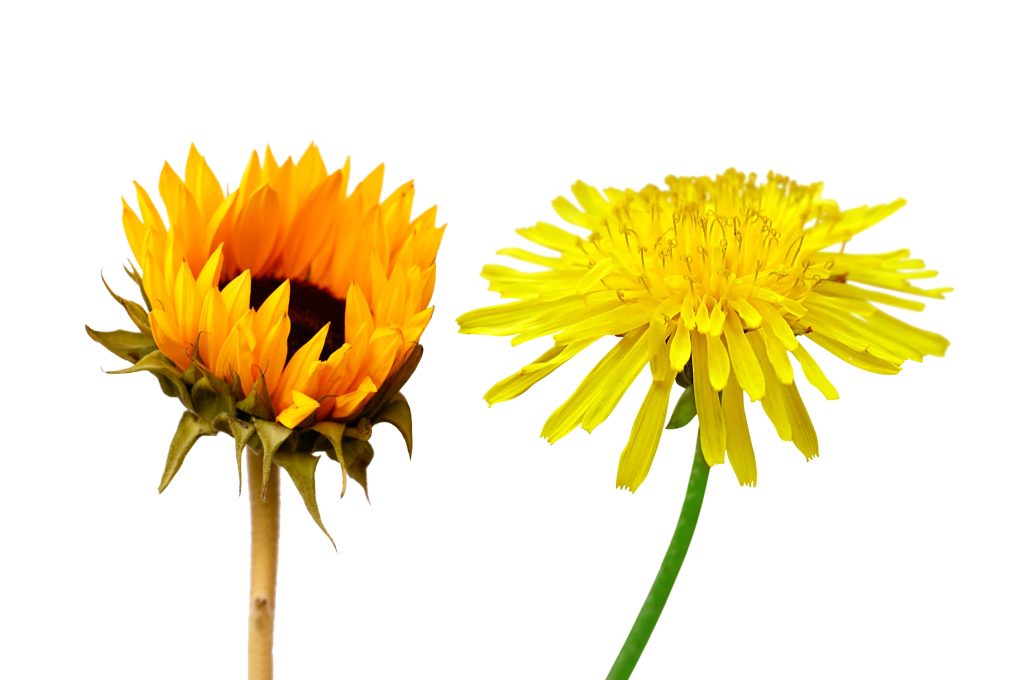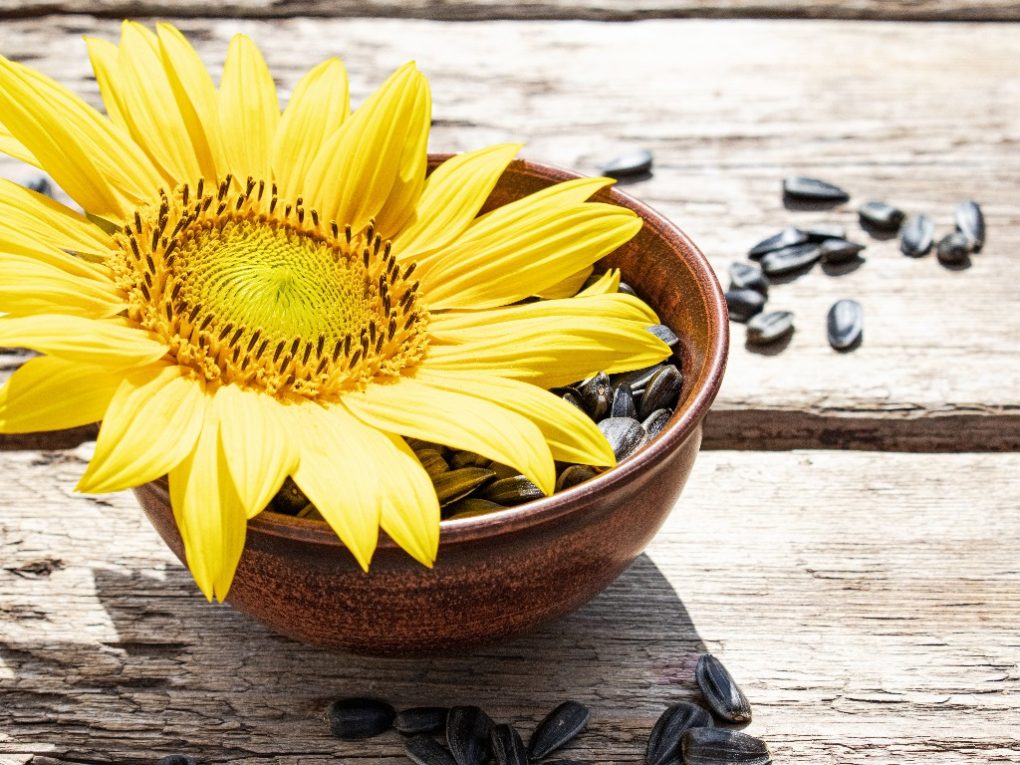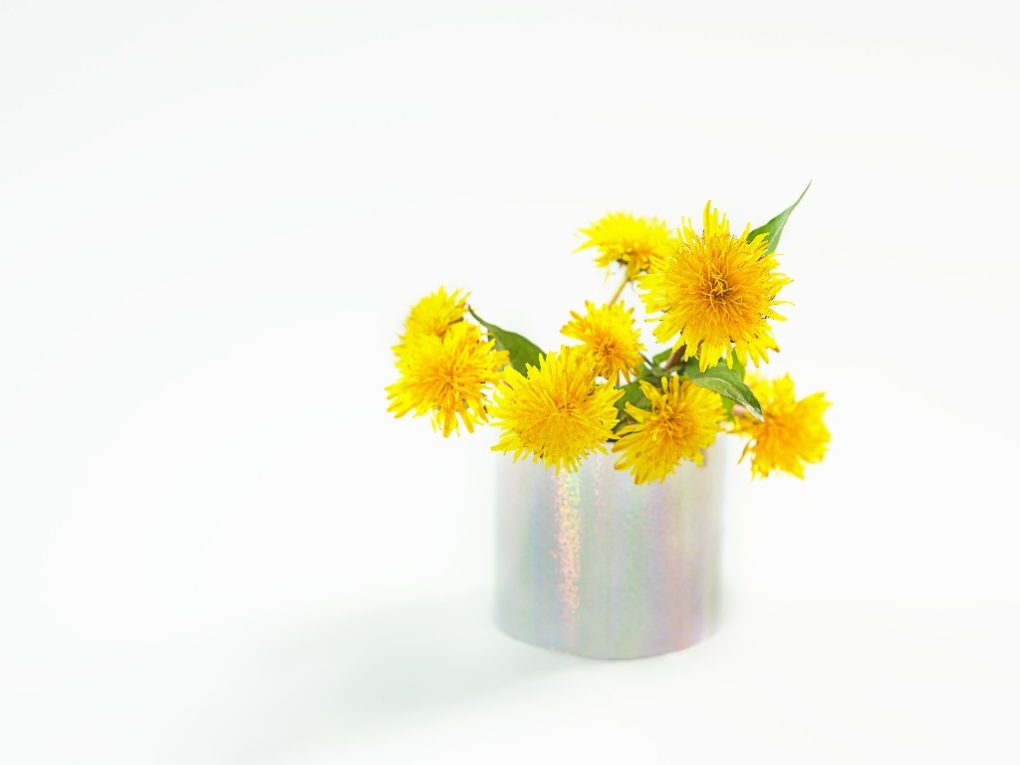Sunflower vs. Dandelion: The Similarities and Differences Between These Flowers
In terms of appearance, sunflowers are tall, upright plants with large, bright yellow flowers and dark green leaves, while dandelions are small, low-growing plants, often considered a weed, with small, yellow flowers and toothed leaves.
Additionally, sunflowers are typically planted annually and grow in full sun, reaching average heights of up to 10 feet. Dandelions are perennials that grow in various conditions, including lawns and meadows. Also, sunflowers are valued for their large, showy flowers and nutritious seeds that can be eaten or used to make oil. At the same time, dandelions have many medicinal properties and can be used in cooking.

Table of Contents
The Similarities Between Sunflowers and Dandelions
Despite their many differences, there are a few similarities between dandelions and sunflowers:
- Flowering plants: Dandelions and sunflowers are both members of the plant kingdom and produce flowers as part of their reproductive process.
- Attract pollinators: Both dandelions and sunflowers produce nectar and pollen, which attract bees and other pollinators to their flowers. When sunflowers and dandelions are effectively pollinated, they can produce more seeds. This is important for the plant species’ survival and provides a food source for animals and humans.
- Can be used in traditional medicine: Dandelions and sunflowers have been used in traditional medicine for their medicinal properties. Sunflower oil is rich in linoleic acid, which has anti-inflammatory properties and can help relieve pain and swelling. At the same time, dandelion leaves are a natural diuretic that can help increase urine production and flush excess bodily fluids.
- Have a wide distribution: Dandelions and sunflowers are found throughout many regions and can adapt to various soil and climatic conditions.
- Have seeds that can disperse easily: Dandelion seeds have a unique pappus structure that allows them to be easily carried by the wind, while sunflower seeds can be dispersed by birds and other animals that feed on them.
Differences Between Sunflowers and Dandelions
Seeds
The seeds of sunflowers and dandelions are quite different from each other in appearance since sunflower seeds are flat, oval-shaped, and have a black and white striped pattern on their outer shell. In contrast, dandelion seeds are very small and lightweight, with a fluffy white pappus attached to a small, brownish seed.

Also, sunflower seeds are relatively large compared to others, typically measuring less than an inch in length. Dandelion seeds are tinier, measuring only a few millimeters in length. Sunflower seeds are commonly used for human consumption and as bird seeds and are a good source of nutrients such as protein, healthy fats, and minerals like magnesium and selenium.
Meanwhile, dandelion seeds are not typically consumed by humans but are an important food source for many small animals and insects. They are also used in traditional medicine for a variety of ailments. Additionally, dandelion seeds are known for their unique ability to disperse in the wind, allowing the plant to spread its seeds over a wide area.
Flowers
Sunflower flowers are large and showy, with a bright yellow or orange central disk surrounded by yellow or red petals. In contrast, dandelion flowers are much smaller, with a bright yellow color and a distinctive shape consisting of many small, narrow petals arranged in a circular pattern.
Sunflower flowers can also be quite large, typically measuring between 4 and 12 inches in diameter. Dandelion flowers are much smaller, typically measuring only one to two inches in diameter.
Sunflower flowers typically bloom in the summer and fall, each blooming for several weeks. In contrast, dandelion flowers bloom in the spring and early summer, with each flower lasting only a day or two.
Sunflowers are commonly used for ornamental purposes in gardens and symbolize happiness or warmth. Unlike them, dandelion flowers are not commonly used for ornamental purposes, but they are an important food source for bees and other pollinators. They are also used in traditional medicine for their diuretic and detoxifying properties.
Leaves
Sunflower leaves are large, broad, and heart-shaped, with a slightly rough texture and serrated edges. They are typically dark green. Dandelion leaves are much smaller and narrower than sunflower leaves, with a distinctive toothed or lobed shape, typically dark green.
The leaves of sunflowers can be quite large, measuring up to 3 to 12 inches in length, while dandelion leaves typically measure only a few inches in length. Sunflower leaves are also arranged alternately along the stem. For dandelions, leaves are arranged in a rosette pattern at the base of the plant.

In terms of usage, sunflower leaves are not commonly used for culinary or medicinal purposes, but they can be used as natural mulch or compost. Meanwhile, dandelion leaves are commonly used in salads and other culinary preparations, as they have a slightly bitter taste and are high in vitamins and minerals. Like its flowers, the dandelion leaves are also used in traditional medicine for their diuretic and detoxifying properties.
Roots
Sunflower roots are typically long and thick, with a taproot growing straight into the soil. They may have small lateral roots branching off from the main taproot. In contrast, dandelion roots are typically thin and fibrous, with a taproot that can be quite long and may have several lateral roots branching off from it.
Both sunflower and dandelion roots can grow quite deep, often reaching several feet into the soil. Their roots also anchor the plant in the soil and absorb water and nutrients from the surrounding soil.
Sunflower roots are not commonly used for culinary or medicinal purposes, but they can help to improve soil structure and prevent erosion. Dandelion roots are commonly used in herbal medicine and as a natural remedy for various ailments, including digestive issues and skin conditions. They can also be roasted and used as a coffee substitute.
